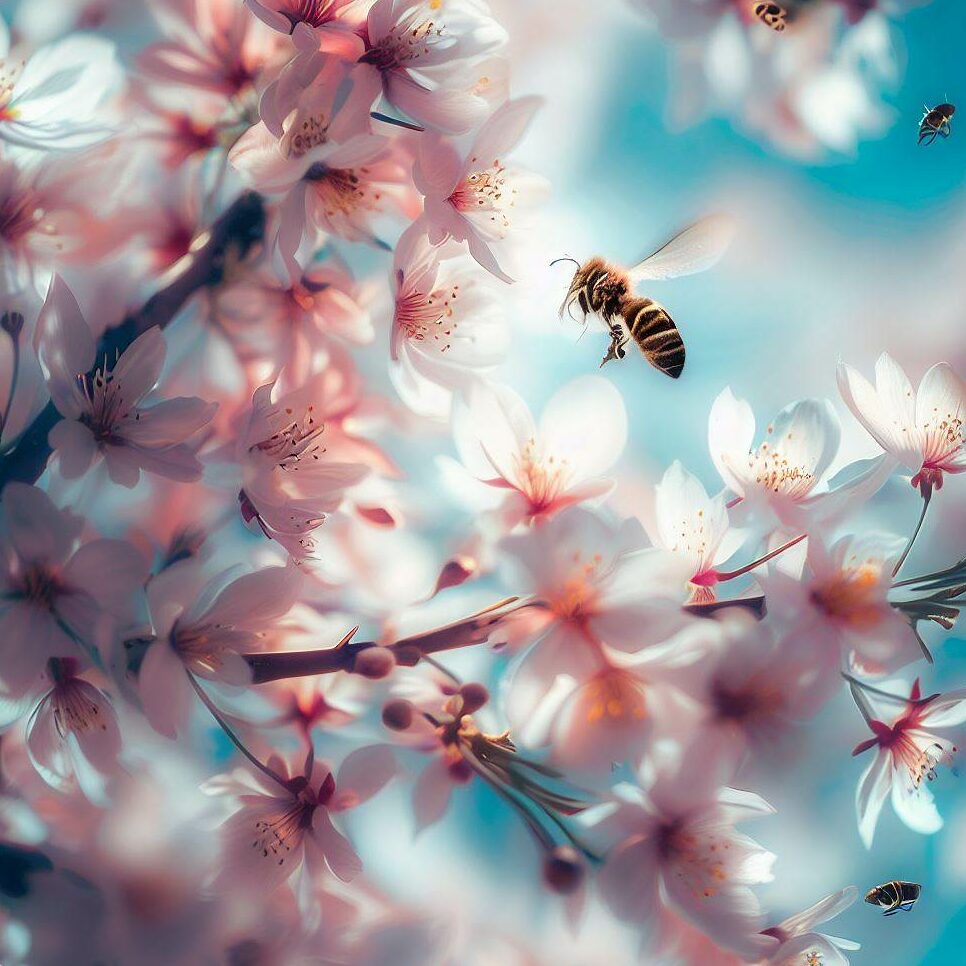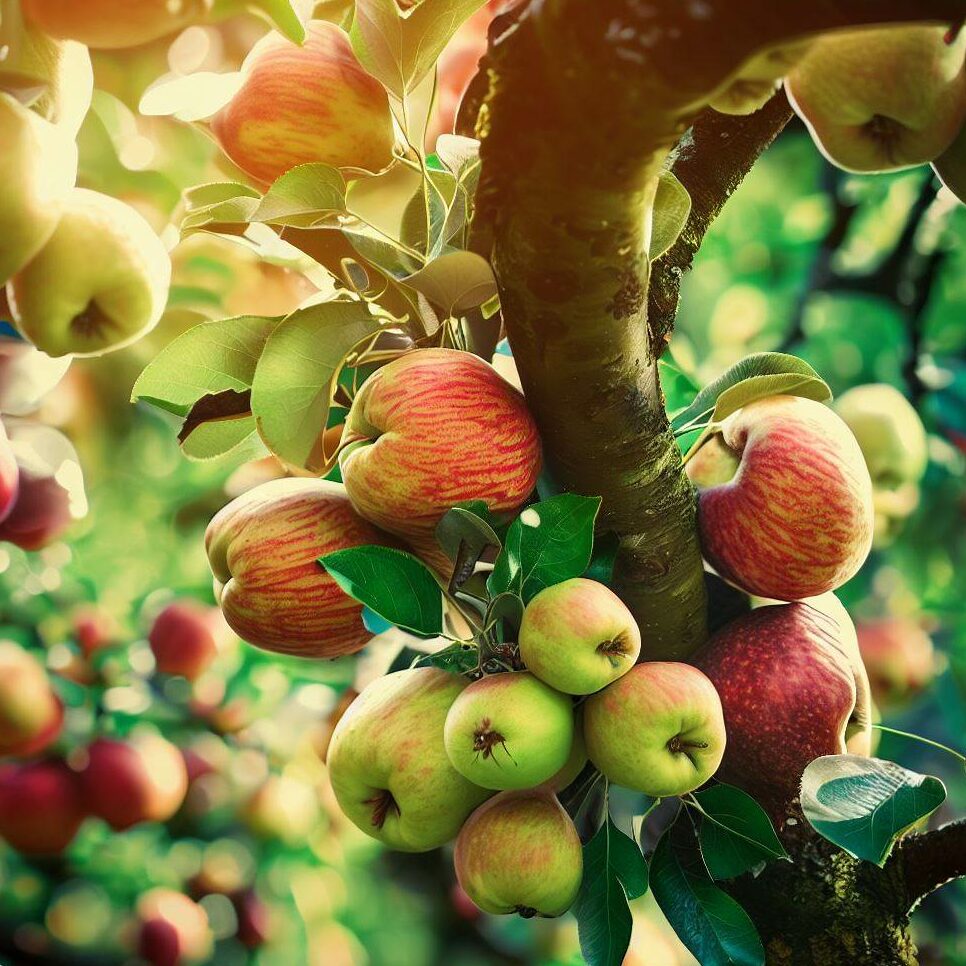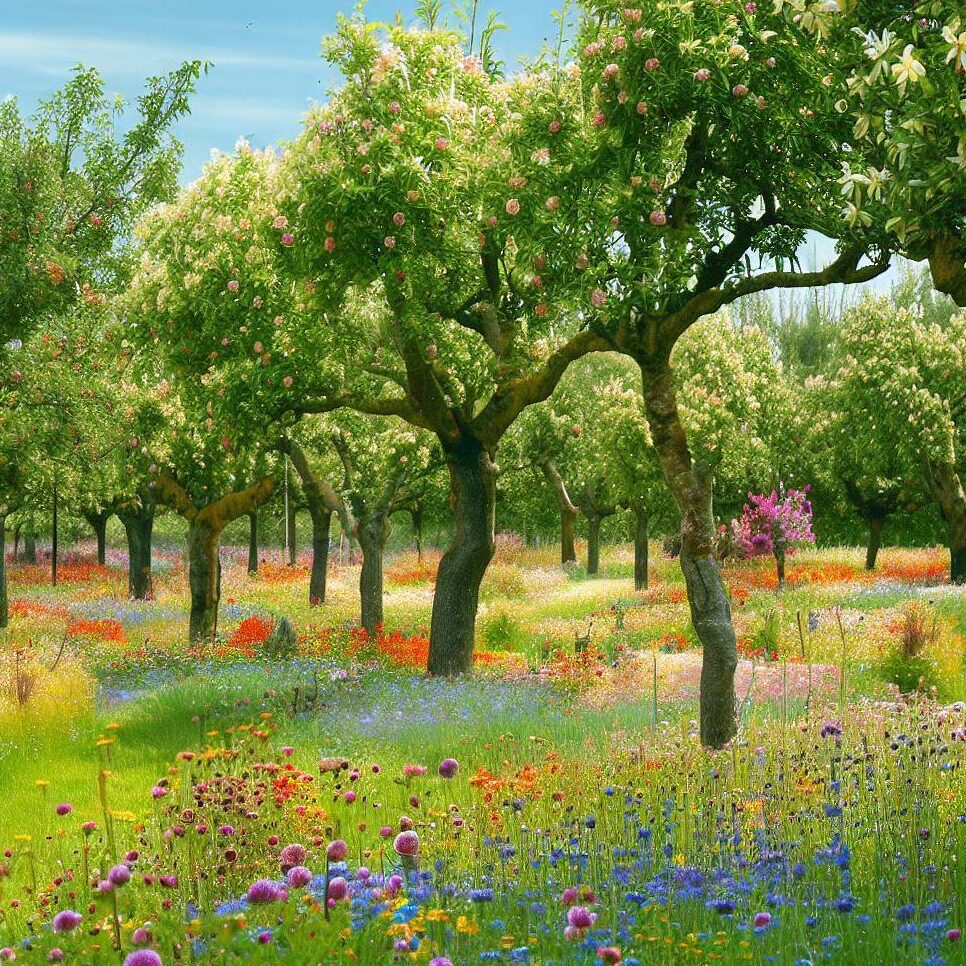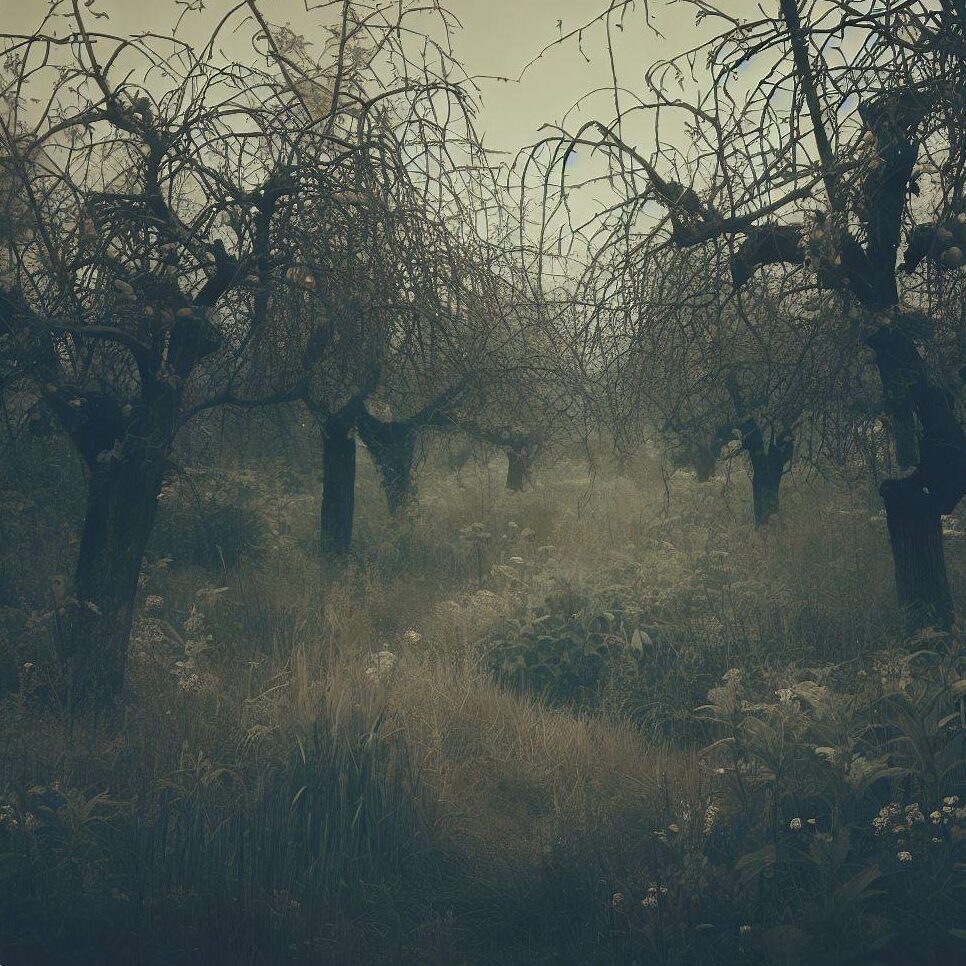Companion planting is a time-tested gardening method that enriches and protects vulnerable crops. Farmers and gardeners plant specific crops near each other in order to deter pests, attract beneficial insects, and enhance crop productivity. This method is an easy, natural way to boost your garden’s yield and keep it healthy.
A good fruit tree companion planting chart will include the following beneficial companion types: Dynamic accumulators, such as comfrey, dandelions, clover, yarrow, and borage, that bring nutrients to the surface. Pollinator attractors like marigolds, bee balm, lavender, borage, catmint, tansy, and sunflowers, that attract beneficial insects. Mulch/ground cover plants like comfrey, strawberries, clover, and alfalfa, that conserve moisture and regulate soil temperature. Nitrogen fixers such as lupine, clover, fava beans, and crown vetch, that enrich the soil with nitrogen. Pest-repellent plants like hyssop, lavender, marigolds, nasturtiums, and garlic, that deter pests.

Understanding What Fruit Trees are Good to Plant Together
Companion planting isn’t just about pairing your fruit trees with the right plants; it’s also about knowing what fruit trees are good to plant together.
This is where the concept of fruit tree compatibility comes into play.
What is Fruit Tree Compatibility?
Fruit tree compatibility refers to the ability of different fruit tree species or varieties to thrive when planted near each other. Some fruit trees can benefit from being planted together, while others may hinder each other’s growth or even spread diseases.
Understanding this compatibility is crucial for planning a successful orchard.
For instance, certain apple varieties can cross-pollinate, enhancing fruit production. On the other hand, planting a peach tree near a cherry tree might not be a good idea, as they can compete for resources and potentially spread diseases.
Fruit Tree Compatibility
A fruit tree compatibility chart can be a handy tool for planning your orchard. It provides a visual guide to which fruit trees can be planted together and which ones should be kept apart.
For example, apple trees are generally compatible with pear and plum trees, but not with citrus trees. Similarly, peach trees can be planted with plum and cherry trees, but not with apple or pear trees.
Creating a fruit tree compatibility chart for your garden can be a fun and educational project. It can help you visualize your garden layout and make informed decisions about what to plant where. Plus, it can serve as a reference guide as you add more trees to your garden over the years.

Choosing the Right Fruit Trees to Plant Together
Choosing the right fruit trees to plant together can make a big difference in your garden’s success. Here are a few tips to keep in mind:
Consider bloom times: Fruit trees that bloom at the same time are more likely to cross-pollinate and produce fruit. For example, ‘Golden Delicious’ and ‘Granny Smith’ apple trees bloom around the same time and can cross-pollinate each other.
Think about tree size: Larger trees can overshadow smaller ones, blocking sunlight and competing for nutrients. Try to group trees of similar sizes together, or plan your garden so that smaller trees aren’t in the shadow of larger ones.
Check for disease resistance: Some fruit tree varieties are more resistant to certain diseases than others. Planting resistant varieties together can help keep your garden healthy.
What follows is a list of the most common fruit trees, and whether they are self pollinating or cross pollinating…
| Tree | Cross-Pollinating | Self-Pollinating |
|---|---|---|
| Apple Trees | ✔ | |
| Apricot Trees | (some) | (some) |
| Avocado Trees | ✔ | |
| Banana Trees | ✔ | |
| Cherry Trees | (some) | (some) |
| Citrus Trees | ✔ | |
| Fig Trees | ✔ | |
| Guava Trees | ✔ | |
| Mango Trees | ✔ | |
| Olive Trees | ✔ | |
| Papaya Trees | (some) | (some) |
| Peach and Nectarine Trees | (some) | (some) |
| Pear Trees | ✔ | |
| Persimmon Trees | ✔ | |
| Plum Trees | (some) | (some) |
| Pomegranate Trees | ✔ |
Remember, what works in one garden might not work in another. It’s important to experiment and observe what works best in your specific conditions.
What Fruit Trees Should Not be Planted Together
Just as some fruit trees make good companions, others can cause problems when planted together. Here are a few tips to avoid incompatible pairings:
Beware of disease spread: Some diseases can spread from one type of fruit tree to another. For example, fire blight can spread from apple trees to pear trees. If you know a particular disease is common in your area, avoid planting susceptible species together.
Avoid nutrient competition: All trees need nutrients, but some are heavier feeders than others. Planting heavy feeders together can lead to nutrient competition, which can hinder growth and fruit production.
Watch out for allelopathy: Some trees, like the black walnut, release substances that can inhibit the growth of other plants. Be sure to research any potential allelopathic effects before deciding where to plant your fruit trees.
In my experience, avoiding incompatible fruit trees can save a lot of headaches down the line.
It’s much easier to plan your garden carefully from the start than to deal with problems like disease spread or nutrient competition later on.

Fruit Tree Companion Planting Chart
Companion plants play a crucial role in the health and productivity of your fruit trees. They can help deter pests, attract beneficial insects, improve soil health, and even enhance the flavor of your fruit.
But just like fruit trees, not all companion plants are created equal. Some make excellent partners for your fruit trees, while others can cause more harm than good.
For example, In my garden, I’ve found that planting marigolds around my apple trees helps to deter pests, while planting comfrey helps to improve soil health.
It’s all about creating a balanced ecosystem where each plant contributes something valuable.
By understanding how fruit trees and companion plants complement each other, you can create a more productive and sustainable garden.
What is a Fruit Tree Guild?
A fruit tree guild is a planting technique that involves creating a diverse ecosystem around a fruit tree, utilizing carefully selected companion plants. These companion plants provide a range of benefits such as nitrogen fixation, pest control, soil improvement, and microclimate regulation. By strategically combining plants with complementary characteristics, a fruit tree guild fosters a balanced and self-sustaining ecosystem, promoting resilience and reducing the need for external interventions. This holistic approach enhances biodiversity, improves fruit tree health and productivity, and contributes to sustainable agriculture practices.
The concept of a fruit tree guild recognizes the interconnectedness of plant species and aims to mimic the relationships found in natural ecosystems. Nitrogen-fixing plants enrich the soil, while pest-repellent plants attract beneficial insects that aid in pollination and pest control. Deep-rooted plants enhance soil structure and moisture retention, while ground covers suppress weeds and prevent soil erosion. By implementing a fruit tree guild, gardeners and farmers can create a harmonious and resilient ecosystem that supports the health and productivity of fruit trees while promoting ecological sustainability and biodiversity.
Understanding the Roles of Each Companion Plant
Companion plants for fruit trees can have multiple benefits. For example…
Dynamic accumulators, like comfrey, dandelions, clover, yarrow, and borage, bring nutrients to the surface, improving soil fertility. Their deep roots access minerals and release them as they decompose, benefiting nearby plants.
Pollinator attractors, such as marigolds, bee balm, lavender, borage, catmint, tansy, and sunflowers, draw bees, butterflies, and hummingbirds. This aids pollination, leading to increased fruit and seed production, while supporting biodiversity.
Mulch/ground cover plants, like comfrey, strawberries, clover, and alfalfa, conserve moisture and regulate soil temperature. They reduce water evaporation and insulate the soil, creating a better environment for plant growth
Nitrogen fixers, including lupine, clover, fava beans, and crown vetch, enrich soil with nitrogen. They form symbiotic relationships with nitrogen-fixing bacteria, converting atmospheric nitrogen into a usable form for plants.
Pest-repellent plants, like hyssop, lavender, marigolds, nasturtiums, and garlic, naturally deter pests. They contain compounds or emit odors that repel insects, reducing the need for chemical pesticides and promoting a balanced ecosystem.
Below is a fruit tree companion planting chart that highlights the benefits of the most common plants used in fruit forests and orchards…
| Plant | Dynamic Accumulators | Mulch/Ground Cover | Nitrogen Fixers | Pollinator Attractors | Pest Repellent |
|---|---|---|---|---|---|
| Alfalfa | ✔ | ||||
| Bee Balm | ✔ | ||||
| Borage | ✔ | ||||
| Catmint | ✔ | ||||
| Chives | ✔ | ||||
| Clover | ✔ | ✔ | ✔ | ||
| Comfrey | ✔ | ✔ | |||
| Crown Vetch | ✔ | ||||
| Dandelion | ✔ | ||||
| Echinacea | ✔ | ||||
| Fava Beans | ✔ | ||||
| Fennel | ✔ | ||||
| Garlic | ✔ | ✔ | |||
| Hyssop | ✔ | ✔ | |||
| Lavender | ✔ | ✔ | |||
| Lupine | ✔ | ||||
| Marigolds | ✔ | ✔ | |||
| Nasturtiums | ✔ | ✔ | |||
| Nettles | ✔ | ||||
| Strawberries | ✔ | ||||
| Sunflowers | ✔ | ||||
| Tansy | ✔ | ||||
| Yarrow | ✔ |
Understanding the role of each companion plant can help you make more informed decisions about what to plant with your fruit trees. Remember, the goal is to create a balanced ecosystem where each plant supports the others.
What NOT to Plant Near Fruit Trees
Just as there are plants that make good companions for fruit trees, there are also plants that should be avoided. These include:
Grass and Weeds: These plants compete with fruit trees for nutrients and water, which can hinder the growth and productivity of your trees.
Potatoes: Potatoes can compete with fruit trees for nutrients, and they can also spread blight, a disease that can be devastating to fruit trees.
Carrots: Like grass and weeds, carrots compete with fruit trees for nutrients. Plus, their shallow root systems can interfere with the deeper roots of fruit trees.
Tomatoes: These plants can spread blight, just like potatoes. It’s best to keep them away from your fruit trees to prevent the spread of this disease.
Avoiding these plants in your fruit tree garden can help ensure that your trees get the nutrients and care they need to thrive.

Practical Tips for Implementing Companion Planting
Companion planting can be a game-changer for your garden, but it does require a bit of planning and knowledge. Here are some practical tips to help you get started:
Do Your Research: Before you start planting, take the time to research which plants are compatible with each other. Remember, some plants can benefit each other, while others can hinder growth or even harm each other. Use resources like our fruit tree companion planting chart to guide your decisions.
Consider the Needs of Each Plant: Each plant has its own needs in terms of sunlight, water, and soil conditions. Make sure to choose companion plants that have similar needs to ensure they can coexist happily.
Use Companion Plants to Deter Pests: Many companion plants can help deter pests. For example, marigolds can deter nematodes, while garlic can help keep aphids at bay. Plant these companions near your fruit trees to help protect them.

Don’t Forget About Pollinators: Some companion plants, like wildflowers and lavender, can help attract pollinators to your garden. This can boost the productivity of your fruit trees and make your garden a more vibrant place.
Start Small: If you’re new to companion planting, start small. Try pairing just a few plants together and see how they do. You can always add more as you gain confidence and experience.
Be Patient: Companion planting is a long-term strategy. It may take a season or two to start seeing the benefits. But with patience and care, you’ll be rewarded with a healthier, more productive garden.
Remember, the goal of companion planting is to create a balanced ecosystem in your garden. By choosing the right companions for your fruit trees, you can help promote this balance and enjoy the many benefits it brings.
Conclusion
From enhancing soil fertility and deterring pests to promoting pollination and boosting crop yields, companion planting is a powerful tool for any gardener. Companion planting is about fostering a balanced, thriving ecosystem where every plant plays a part. It’s about working with nature, rather than against it, to create a garden that’s not only productive but also resilient and sustainable.
Start with a few compatible fruit trees and companion plants, and see how they do. Experiment, observe, and learn from your experiences. Remember, every garden is unique, and what works for one might not work for another. But with patience, persistence, and a bit of curiosity, you can unlock the full potential of your garden through companion planting.

[…] is important for maintaining the health and productivity of your orchard. While there are many good fruit tree companions, certain plants can compete for nutrients, attract harmful pests, or even release chemicals that […]